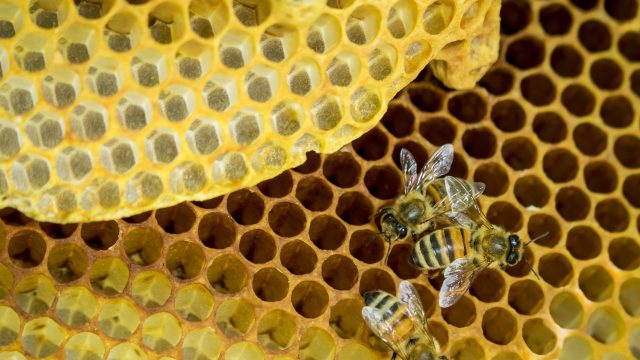27
Jul
Insufficient Scientific Evidence on Mitigation Measures to Protect Pollinators from Pesticides, Study Finds

(Beyond Pesticides, July 27, 2023) A study published in the Journal of Economic Entomology calls into question the scientific literature on protecting bees from pesticides. The study analyzes actions taken by pesticide users to reduce the risk of pesticides on nontarget organisms, known as “mitigation measures.” Ultimately, the study finds that there is insufficient evidence to support the effectiveness of bee-protecting mitigation measures.  Â
“Almost all research was centered around protecting honey bees. However, honey bees are a managed species that is not endangered,” Edward Straw, Ph.D., a postdoctoral researcher in the School of Agriculture and Food Science at University College Dublin in Ireland and lead author on the study, says, “When we try to protect bees, we really want to be protecting wild, unmanaged bee species, as these are the species which are in decline.”Â
The study includes a chart of mitigation methods that have been tested in the scientific literature. The mitigation measures under evaluation include: restricting pesticide application to certain times of day, restricting the application of pesticides during weather events, removing flowering weeds that attract pollinators, applying repellents to deter pollinators, and more. The researchers find that there are few empirical tests on the most widely used mitigation measures, and they recommend that more and stronger scientific evidence is required to justify existing mitigation measures to help reduce the impacts of pesticides on bees while maintaining crop protection.Â
The study also finds that only one category of mitigation measure appears to be more thoroughly covered with 12 studies — repellents, which are used to repel bees from visiting crops recently treated with pesticides. “It is an interesting idea, but it is not yet ready to be used,” says Mr. Straw. “It would need to be tested on a diversity of bee and insect species, as if it is only repellent to one or two species, all the other bees would still be exposed to the pesticide.”Â
However, the researchers caution that the number of studies alone is not a sufficient measure of the effectiveness of a mitigation measure. The quality of the research is also important, and evidence from multiple continents and multiple species is needed to determine whether a measure works.Â
Jay Feldman, executive director of Beyond Pesticides says, “Even the most effective mitigation measures are not adequate to protect pollinators and human health.” Beyond Pesticides has documented drift through air and the migration of pesticides into groundwater with toxic runoff.Â
With bees playing a crucial role in pollinating crops, it is important to ensure that they are adequately protected from the harmful effects of pesticides. Beyond Pesticides has long advocated to protect and enhance biodiversity, prevent crop loss, as well as protect pollinator populations, human health, and wildlife. Anything short of complete pesticide elimination in our agricultural system is inadequate. Eliminating synthetic pesticide use also helps to reduce the use of fossil fuels that contribute to the climate crisis and the spread of pests and diseases. See Beyond Pesticides’ organic agriculture page. Also, see Beyond Pesticides’ Bee Protective page.Â
All unattributed positions and opinions in this piece are those of Beyond Pesticides.
Source: Journal of Economic Entomology










